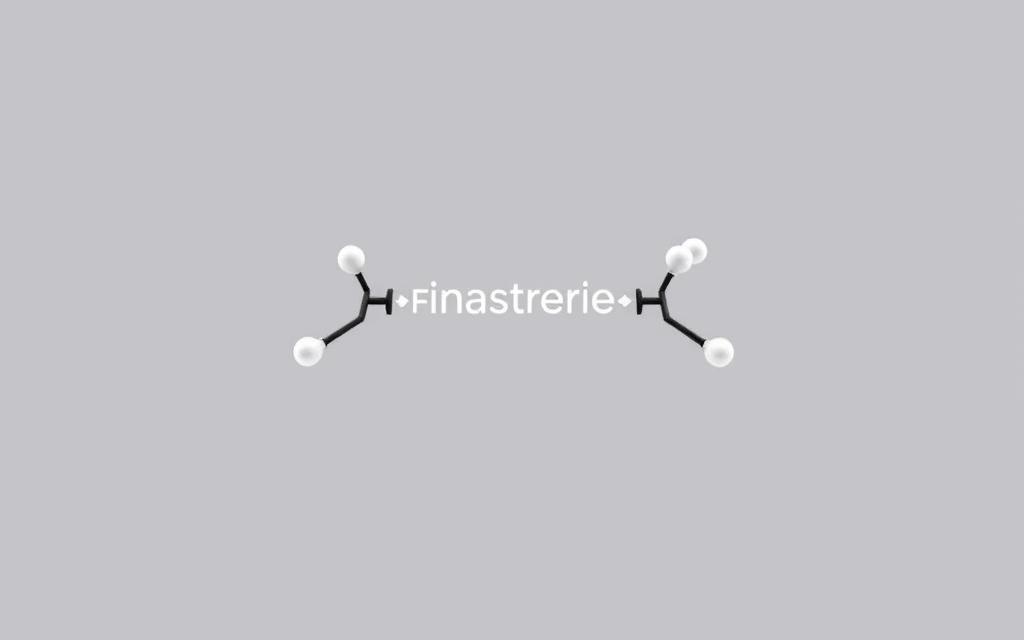Does Finax Cause Erectile Dysfunction? Exploring Risks & Effects
Finax, a medication primarily used to treat male pattern baldness, has been a subject of concern regarding its potential impact on sexual health. Finasteride, the active ingredient in Finax, is known to have various side effects, sparking debates about its safety.
One of the most significant concerns is the potential link between Finax side effects and erectile dysfunction. While Finax is effective in treating hair loss, understanding its risks is crucial. This article aims to explore the relationship between Finax and erectile dysfunction, providing insights into the risks and effects associated with its use.
The connection between Finasteride and ED has been a topic of discussion, with some studies suggesting a possible correlation. As we delve into this issue, it’s essential to consider the available data and expert opinions to provide a comprehensive understanding.
Understanding Finax and Its Primary Uses
To comprehend the implications of Finax on erectile dysfunction, it’s essential to understand what Finax is and how it works. Finax is a brand name for the generic drug Finasteride, which is used to treat specific medical conditions.
What is Finax (Finasteride)?
Finasteride is a 5-alpha-reductase inhibitor, a class of drugs that prevent the conversion of testosterone to dihydrotestosterone (DHT), a potent form of testosterone. By inhibiting this conversion, Finasteride reduces DHT levels in the body.
Medical Conditions Treated with Finax
Finax is primarily used to treat two main conditions: benign prostatic hyperplasia (BPH) and male pattern baldness (androgenetic alopecia). In BPH, Finax helps to reduce the size of an enlarged prostate, improving urinary flow and reducing the risk of acute urinary retention.
How Finax Works in the Body
Finax works by affecting hormone levels, specifically by reducing the concentration of DHT. This reduction has a therapeutic effect on the conditions it treats.
Effects on Hormone Levels
The primary effect of Finax on hormone levels is the reduction of DHT, a hormone involved in the development of prostate enlargement and male pattern baldness. Lower DHT levels can lead to a decrease in prostate size and a slowing down of hair loss.
Target Tissues and Mechanisms
Finax targets the prostate gland and hair follicles. In the prostate, the reduction of DHT leads to a decrease in prostate size. In hair follicles, lower DHT levels can slow down hair loss and, in some cases, promote hair regrowth.

The Connection Between Finax and Sexual Side Effects
The relationship between Finax and sexual health has garnered significant attention due to its potential to cause erectile dysfunction. Finax, a medication widely used for treating conditions like benign prostatic hyperplasia and male pattern baldness, has been linked to various sexual side effects in some individuals.

Clinical Evidence of Sexual Dysfunction
Numerous studies have investigated the clinical evidence of sexual dysfunction associated with Finax. Research indicates that a subset of users experience sexual side effects, including erectile dysfunction, decreased libido, and ejaculation disorders. A comprehensive review of clinical trials and post-marketing surveillance data reveals a pattern of sexual dysfunction among some Finax users.
Mechanism Behind Finax-Related Erectile Dysfunction
The exact mechanism behind Finax-related erectile dysfunction is not fully understood, but it is believed to involve the drug’s effect on dihydrotestosterone (DHT) levels. Finax works by inhibiting the conversion of testosterone to DHT, a hormone involved in the development of certain prostate and scalp conditions. However, this alteration in hormone levels may potentially impact sexual function.
Prevalence Rates and Risk Factors
Understanding the prevalence rates and risk factors associated with Finax-related sexual side effects is crucial. Studies suggest that the prevalence of sexual dysfunction varies among Finax users, with some research indicating that it affects a small but significant percentage. Risk factors may include the duration of Finax treatment, individual susceptibility, and the presence of underlying health conditions.
Timeframe: When Side Effects Typically Occur
The timeframe during which sexual side effects typically occur is another important consideration. Evidence suggests that these side effects can manifest at various stages of Finax treatment, from the initial months to several years after starting the medication. Monitoring sexual health during Finax treatment is essential to identify and address any adverse effects promptly.
In conclusion, the connection between Finax and sexual side effects is complex and multifaceted. While not all users experience sexual dysfunction, being aware of the potential risks and monitoring sexual health during treatment is crucial.
Managing Erectile Dysfunction: Recommended Cialis Dose for Erectile Dysfunction
When Finax leads to erectile dysfunction, healthcare providers may recommend Cialis as part of a comprehensive treatment plan. Erectile dysfunction (ED) can significantly impact a man’s quality of life, and managing it effectively is crucial.
How Cialis Works to Treat ED
Cialis, known generically as tadalafil, is a phosphodiesterase type 5 (PDE5) inhibitor. It works by increasing blood flow to the penis during sexual stimulation, helping to achieve and maintain an erection. Unlike some other ED treatments, Cialis can remain effective for up to 36 hours, earning it the nickname “the weekend pill.”
Standard Dosing Guidelines for Cialis
The dosing guidelines for Cialis can vary based on individual needs and health status.
Starting Doses for New Users
For most men, the recommended starting dose of Cialis for as-needed use is 10 mg, taken at least 30 minutes before sexual activity. However, some men may start with a 5 mg daily dose for continuous effect.
Adjusting Dosage Based on Response
The dosage may be adjusted based on efficacy and tolerability. For as-needed dosing, the dose can be increased to 20 mg or decreased to 5 mg. For daily use, doses typically range from 2.5 mg to 5 mg.
Daily vs. As-Needed Dosing Options
Cialis offers flexibility with both as-needed and daily dosing options. The as-needed dose is taken before sexual activity, while daily dosing provides continuous efficacy, allowing for spontaneity.
Potential Side Effects and Precautions
While generally well-tolerated, Cialis can cause side effects such as headache, back pain, and indigestion. Serious side effects, though rare, can include priapism and vision changes. It’s crucial to discuss your medical history and any other medications with your healthcare provider.
| Dosing Option | Recommended Dose | Frequency |
|---|---|---|
| As-Needed | 10 mg (can be adjusted to 5 mg or 20 mg) | At least 30 minutes before sexual activity |
| Daily | 2.5 mg or 5 mg | Once daily |
Understanding the proper use of Cialis and its potential side effects can help individuals make informed decisions about their ED treatment.
Alternative Approaches to Managing Finax-Related ED
For individuals experiencing erectile dysfunction (ED) while taking Finax, exploring alternative treatment options is crucial. This condition can significantly impact quality of life, making it essential to address the issue comprehensively.
Other ED Medications Compatible with Finax
Patients can consider other ED medications that are compatible with Finax. Alternative treatments like Cialis have been shown to be effective in managing ED. It’s essential to consult with a healthcare provider to determine the best course of treatment.
Non-Pharmaceutical Interventions
Non-pharmaceutical interventions can also play a significant role in managing Finax-related ED. Lifestyle changes, such as regular exercise, a balanced diet, and stress reduction techniques, can help alleviate symptoms. These approaches can be used in conjunction with other treatments for enhanced effectiveness.
Discussing Side Effects with Your Healthcare Provider
Open communication with a healthcare provider is vital when experiencing side effects like ED. They can offer guidance on adjusting treatment plans and recommend alternative solutions. Patients should not hesitate to discuss their concerns and symptoms.
When to Consider Discontinuing Finax
In some cases, discontinuing Finax may be necessary if ED persists and significantly impacts quality of life. A healthcare provider can help weigh the benefits and risks of continuing Finax versus switching to an alternative treatment. This decision should be made after thorough consultation and consideration of individual health needs.
Conclusion: Balancing Finax Benefits with ED Risks
Balancing the benefits of Finax with the risks of erectile dysfunction requires a comprehensive understanding of the potential side effects and available management options. While Finax is effective in treating certain medical conditions, its association with ED is a concern that should not be overlooked.
By understanding the risks and effects of Finax on erectile function, individuals can make informed decisions about their treatment. For those experiencing ED, options like Cialis can provide effective relief. The recommended Cialis dose for ED can vary, and it’s essential to follow the guidance of a healthcare provider to minimize potential side effects.
Managing ED risks while using Finax involves a multi-faceted approach, including awareness of potential side effects, consideration of alternative treatments, and discussion with a healthcare provider. By adopting this proactive approach, individuals can maximize the benefits of Finax while minimizing its risks.
